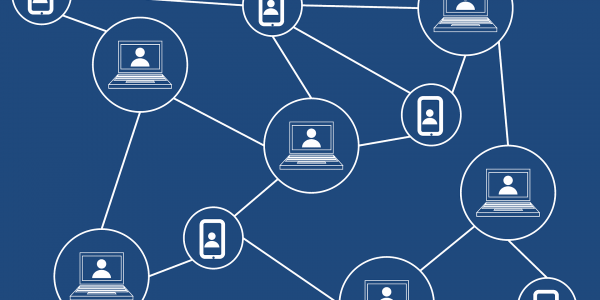What is Web 3.0?
Web 3.0, also known as the "decentralised web", continues its development into the internet of the future. Linked to blockchain technology and cryptocurrency, web 3.0 is arousing curiosity in the tech world. But what is Web 3.0? À What is it for? And does it have a future? Recap on the main information of this new generation of the web and what to remember!
The evolution of the web
Web 3.0 is therefore the 3rd generation of the developed web. But what are the previous ones?
Web 1.0 emerged in the 1990s as the very first generation of the web. Also known as the traditional web, its primary purpose was to disseminate information. Comparable to an information portal, users could move from one page to another in order to consult sites presenting products, such as a catalogue of paper products for example. It was therefore primarily a static web.

The 2000s marked a new turning point with the arrival of Web 2.0. This new version marks a real evolution and break with the previous generation: it is the arrival of the social web. It is no longer just a question of consulting information, but of sharing and exchanging information. This participative web is developing and social networks are appearing: Facebook, Instagram, SnapchatThe web is becoming more and more democratic, and is becoming a platform that everyone can enjoy. It is now possible to create and share various types of content (images, text, video, audio, etc.), give your opinion, chat with other internet users and consult different opinions: this is the birth of virtual socialisation. Used on a daily basis by the majority of people, Web 2.0 continues to develop and has even become essential for some people. Web 2.0 has revolutionised and transformed our relationship with the digital world.
It therefore seemed logical to name the next generation of the Internet the Web 3.0. Gavin Wood, founder of the famous Ethereum blockchain, is behind this project. Invented in 2014, the aim is to create a decentralised web by recording data and content on blockchains. This process would therefore make it possible to democratise the Internet by giving power to content creators and not just to the large groups dominating the sector, such as GAFAM. By using blockchain, Internet users could control their personal data from A to Z and actively participate in the management of the web. This new web can be summarised by the following 3 principles:
- Accessibility everyone can access it
- Universal no operating system manages and controls
- Independence all media can be used
Contact
The technology used

The technology used to develop Web 3.0 is the blockchain. In addition to crypto-currencies, it can be used to record contracts or control the operation of applications: these are called DApps and decentralised applications. These applications are similar to registers in which all exchanges between users are stored. Being decentralised, these registers are indeed stored, but on the users' servers. Therefore, based on a cryptographic system, the DApp is secure, autonomous and decentralised.
Why use Web 3.0?
The web is now dominated by online platforms used all over the world: Amazon, MetaAlphabet, Apple... These large companies collect personal data about Internet users on a daily basis and use them to make money from this personal data. Thanks to the use of blockchain, this web is decentralised, without control points and therefore more secure. Moreover, as it does not pass through intermediaries, such as platforms, banks, institutions, etc., there will be no profit made on the transactions made. Thus, the main objective of this new generation of the web is to give power back to Internet users, notably by no longer passing through intermediaries such as large tech companies.
Web 3.0 therefore brings together various advantages such as ownership and control of shared data, the fact of remaining anonymous or censorship. Moreover, unlike centralised applications, Ethereum's decentralised network limits the risk and downtime of networks. Web 3.0 should therefore continue its development and gradually conquer new Internet users.